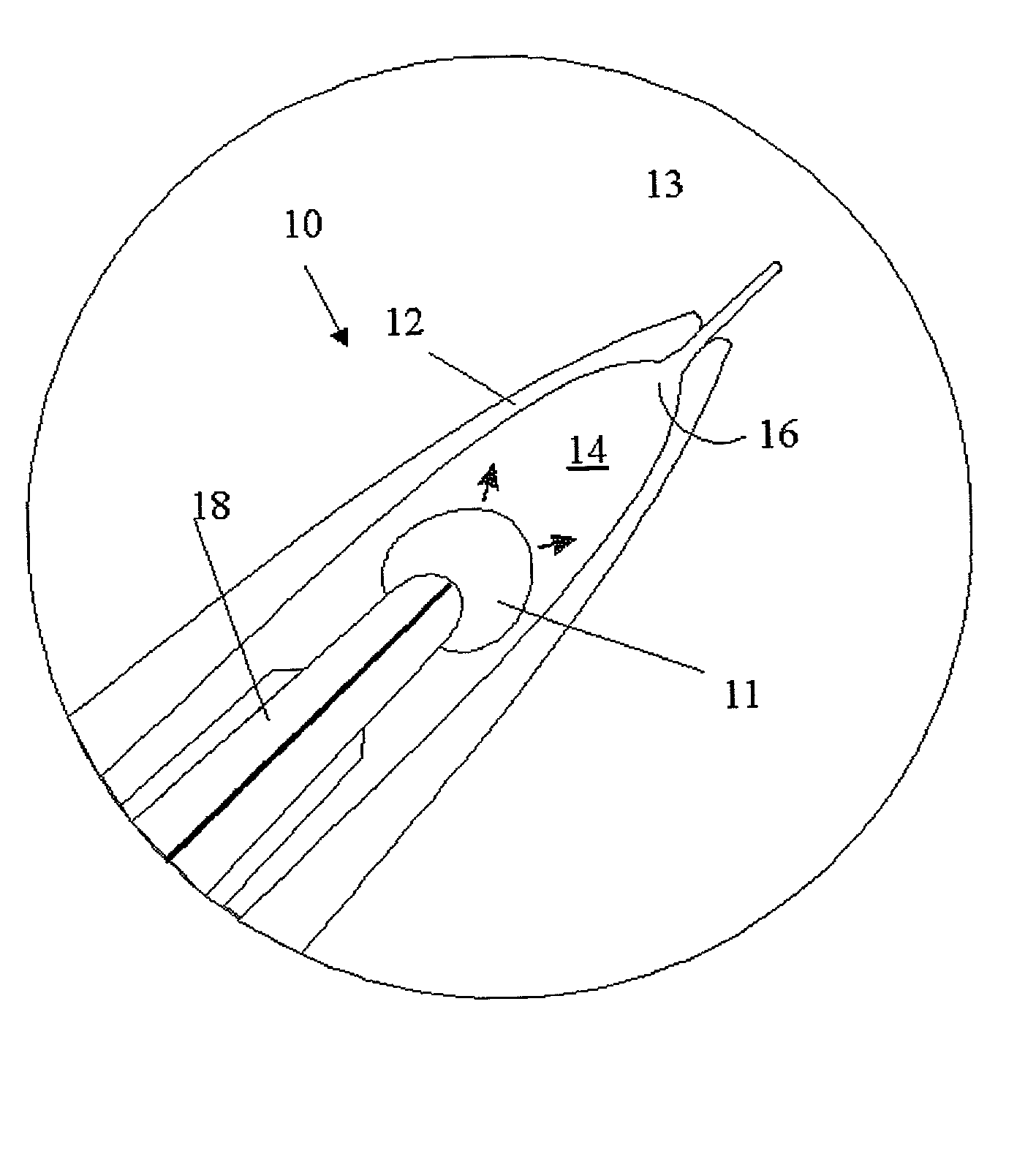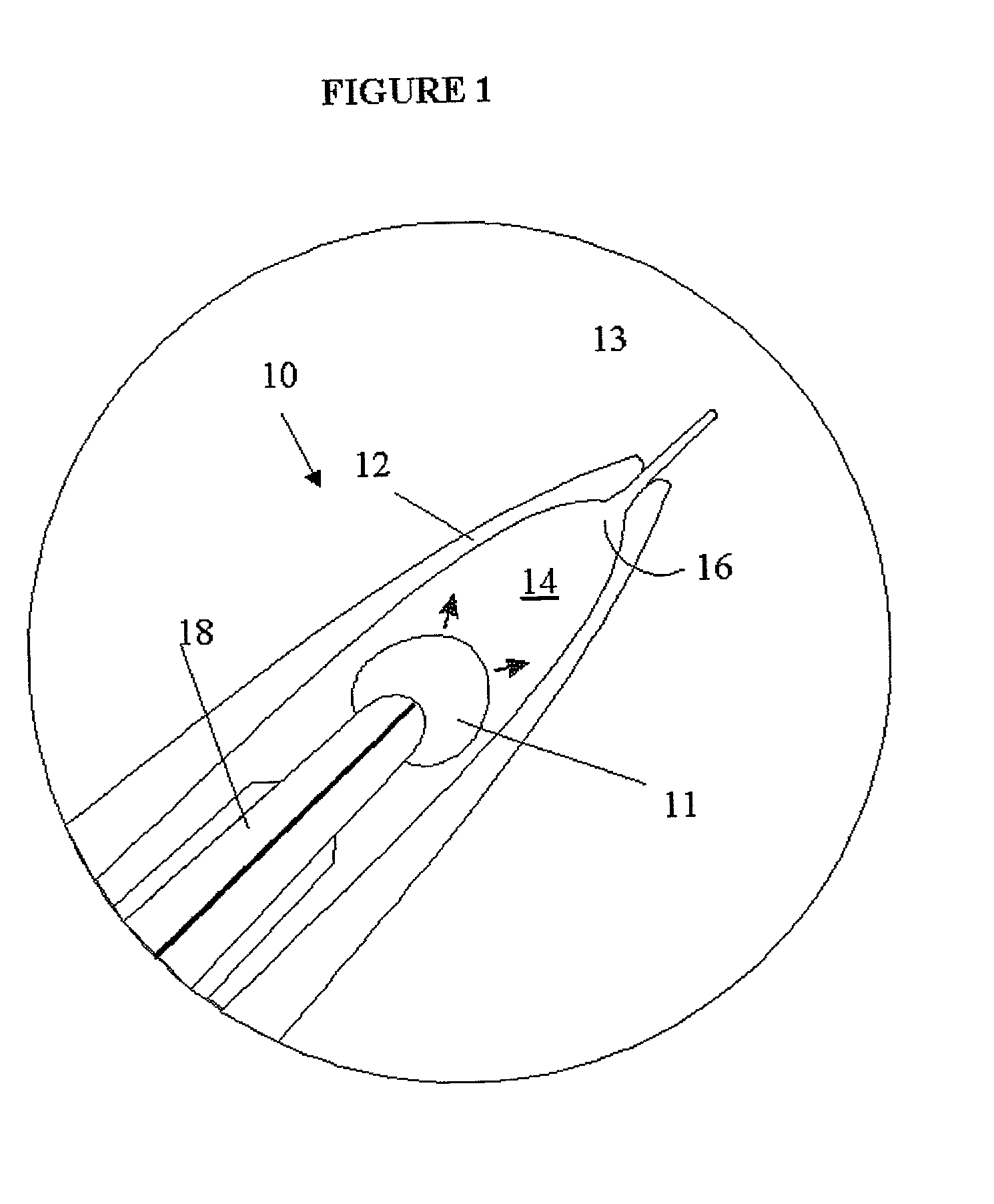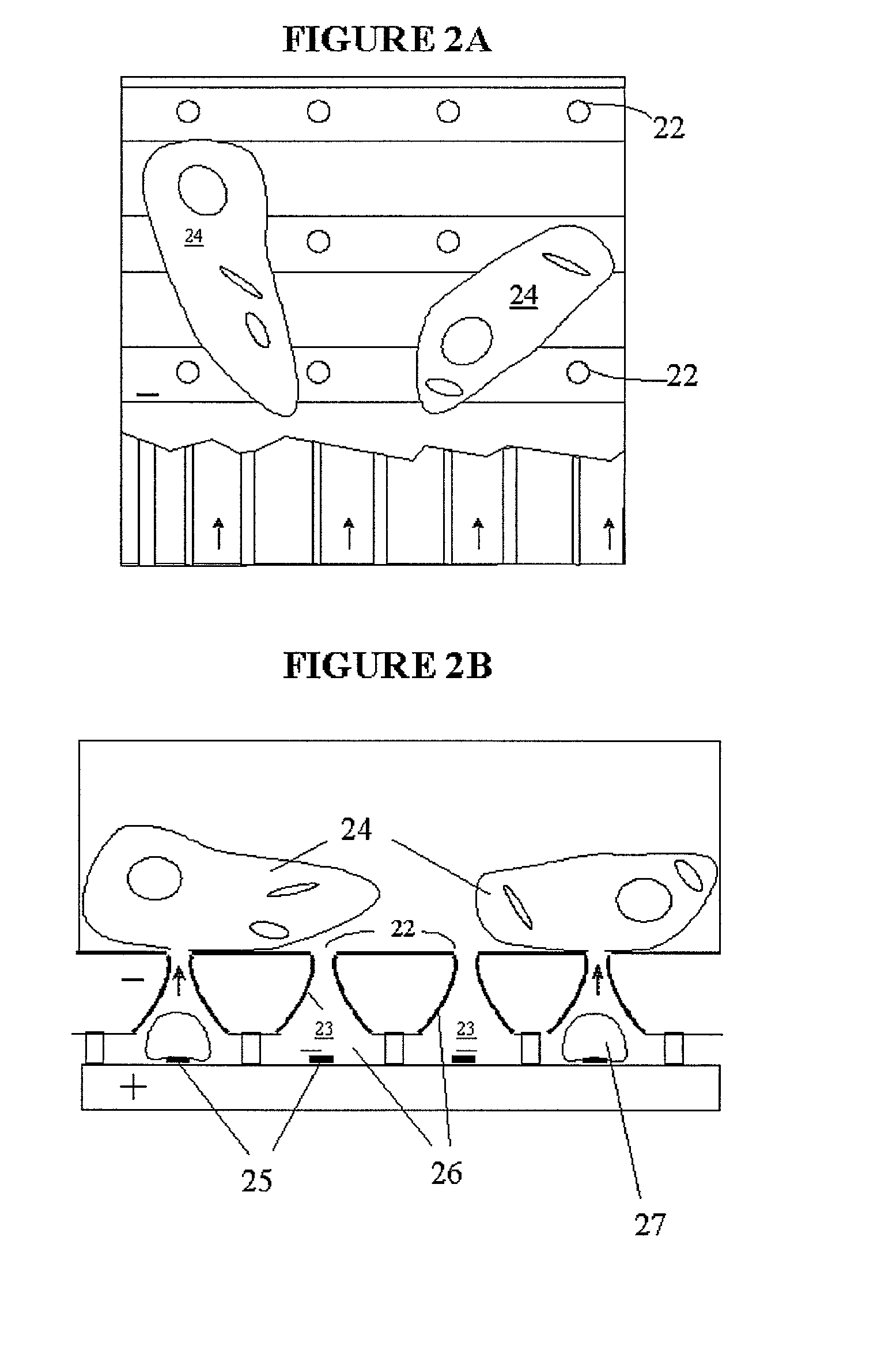Microfluidic devices and methods for producing pulsed microfluidic jets in a liquid environment
a microfluidic device and liquid environment technology, applied in the field of microsurgical procedures, can solve the problems of collateral damage to surrounding tissue, damage far beyond the application site, and damage to the walls of the vessel, so as to reduce collateral damage and retain effective tissue cutting
- Summary
- Abstract
- Description
- Claims
- Application Information
AI Technical Summary
Benefits of technology
Problems solved by technology
Method used
Image
Examples
Embodiment Construction
.
Pulsed Liquid Microjet
[0042] A.Fabrication
[0043] The micronozzle is fabricated from borosilicate glass or quartz. A capillary tube is heated by a CO.sub.2 laser and pulled in a pipette-pulling instrument to give the desired taper and wall thickness. The tapered tube is polished to open the exit hole of the aperture. Under a microscope, the tip of the polished nozzle is heated to thicken the exit hole walls and reflow the glass to the desired exit hole size. The nozzle is mounted and secured over a high-voltage electrode the size of a hypodermic needle that provides the rapid pressure pulse. Prior to use, the nozzle must be filled with a solution, such as saline, which is ejected during a pressure pulse.
[0044] B.Testing
[0045] A small-diameter hole is produced in a gel to simulate tissue cutting. A pulsed liquid microjet as described above, with the nozzle mounted on a high-voltage electrode, is filled with saline solution. A gel is immersed in saline and the tip of the microjet is b...
PUM
 Login to View More
Login to View More Abstract
Description
Claims
Application Information
 Login to View More
Login to View More - R&D
- Intellectual Property
- Life Sciences
- Materials
- Tech Scout
- Unparalleled Data Quality
- Higher Quality Content
- 60% Fewer Hallucinations
Browse by: Latest US Patents, China's latest patents, Technical Efficacy Thesaurus, Application Domain, Technology Topic, Popular Technical Reports.
© 2025 PatSnap. All rights reserved.Legal|Privacy policy|Modern Slavery Act Transparency Statement|Sitemap|About US| Contact US: help@patsnap.com



